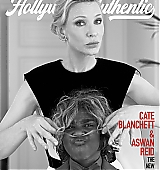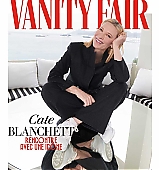Hi, Cate Blanchett fans!
The New Boy had its world premiere at the 76th Cannes Film Festival. Over the weekend, there have been interviews and photoshoots released. We also gathered some reviews on the film. The film will have its Australian premiere at Sydney Film Festival’s opening night gala on June 7th, then it will be released in cinemas in Australia and New Zealand on July 6th. It is slated for a fall release outside Australia according to producer, Coco Francini.
Take a first look at Warwick Thornton’s THE NEW BOY
The international premiere takes place today at @Festival_Cannes in the Un Certain Regard programme. pic.twitter.com/8aPcfM1yKU
— Dirty Films (@dirtyfilms) May 19, 2023
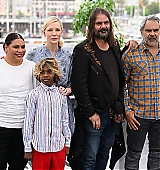
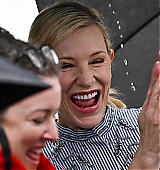
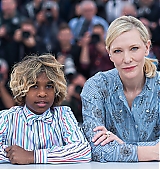
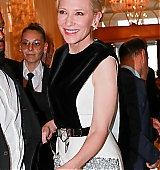
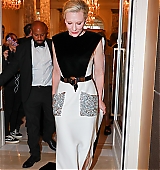
Cate Blanchett arrives at the World Premiere of ‘THE NEW BOY’ at #Cannes2023 pic.twitter.com/6h8HNX4Ta3
— DiscussingFilm (@DiscussingFilm) May 19, 2023
Warwick Thornton, Cate Blanchett and the cast of THE NEW BOY walking up onstage before the film’s world premiere at Un Certain Regard. #Cannes2023 pic.twitter.com/FD650hStmp
— Rafa Sales Ross (@rafiews) May 19, 2023
Cate Blanchett attends #Cannes screening of her film, ‘The New Boy’ pic.twitter.com/TNlFrtoK07
— Deadline Hollywood (@DEADLINE) May 19, 2023
A few words from Cate Blanchett before the start of THE NEW BOY pic.twitter.com/infhD43ori
— Ema Sasic (@ema_sasic) May 19, 2023
Cate Blanchett and director Warwick Thornton receive a sustained applause and standing ovation for ‘The New Boy’ #Cannes2023 pic.twitter.com/bSJ4KEDcdq
— Deadline Hollywood (@DEADLINE) May 19, 2023
La sublime et talentueuse Cate Blanchett applaudit le réalisateur Warwick Thornton, extrêmement ému, pour #TheNewBoy, dans lequel elle joue et qu’elle a produit. Le film a été présenté au Certain Regard. #Cannes2023 pic.twitter.com/prjpqBa5sX
— We Love Cinema (@welovecinemafr) May 19, 2023
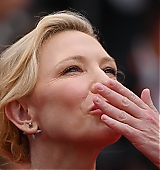

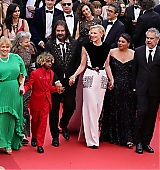
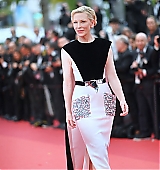
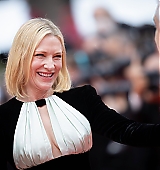
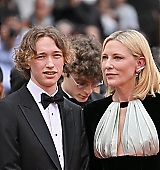
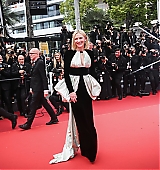
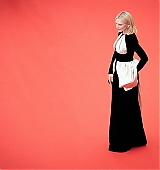
Reviews
Cate Blanchett, who also serves as a producer here, is incredibly affecting in this challenging and larger than life role, and not a minor part in the two-time Oscar winner’s eclectic resume. On the contrary, Sister Eileen allows Blanchett to reach new territories as a performer. Her big moments are showy, but never affected. She finds a strong resonance in this role to solidify her current merited place in the movie industry.
The New Boy puts faith at its center by using explicit analogies. What if the convictions we were raised to believe and work hard for is challenged by what is substantial. Sister Eileen is a renegade, but Thornton is interested in her affinity with the boys. She conveys a rare representation of nuns in cinema – mostly portrayed as deranged, problematic or unhinged. In order to keep offering her care and attention to the boys under her sustenance, Sister Eileen hides a secret: she is pretending the elderly monk who is supposed to be in charge is still alive.
Warwick Thornton is on triple duty in The New Boy as a writer, director and director of photography — which is by far the most technically impressive aspect of them all. The film starts with a series of sensational shots; all of them are well constructed to prove the beauty of his vision. His style, to those familiar with it, has always been grand in scope to make you feel like every single component has been schemed right from the development stage.
Full review on AwardsWatch
Warwick Thornton’s The New Boy, co-starring and produced by Cate Blanchett, is, at heart, a simple story of a young Indigenous Australian lad brought to a religious orphanage in order to be turned around and sent out to the world in an acceptable shape for the white establishment. What sets it apart is Thornton’s deep spirituality, examined here as the titular ‘The New Boy’ encounters – and explores – Christianity. But it is not a two-way street: Christianity will never accept who he is.
There’s a cinematic magic to Thornton’s work, as evidenced in the award-winning Samson and Delilah (2009) and 2017’s Sweet Country. His perspective as an Aboriginal film-maker is uniquely beautiful and the stories he tells are related as he feels them, resulting in a visual experience which runs quietly deeper than the words and performances. Although unconventional in its own way, The New Boy is also his most conventional ‘story’ to date. Blanchett’s appearance – playing Sister Eileen, who runs the orphanage/church in her own eccentric way – will help this easily-digestible film into select theatrical play, although the fussiness her character lends to the still narrative is not always the film’s most appealing element.
The sheer beauty of Southern Australia is never in doubt; Thornton constructed his set near the old mining town of Burra and filmed in that single location. As usual, he directed, wrote and lensed the film, which comes directly from his own personal experience of being sent to a remote boarding school as a young boy after getting into trouble at his home in Alice Springs. The New Boy (Aswan Reid), though, is a more wild and natural force, first shown being captured in the desert by a horseback police patrol. This may be an establishing sequence, but Thornton gives us the Aboriginal lad’s ferocity, the steam-engined Australia of the wartime 1940 and the founding notes of Nick Cave and Warren Ellis’s emotional score before The New Boy ever arrives at Sister Eileen’s remote boarding school of eight Indigenous boys.
Aboriginal storytelling is influenced by the Dreamtime of their creation legends. The New Boy himself can seem like a dream, an elemental visitor to the colonisers who cannot accept him or what he stands for, although he tries to understand theirs. It is all to his loss, Thornton points out, and theirs.
Full review on Screen Daily
Warwick Thornton has been doubling as cinematographer on his projects since back before his debut, Samson & Delilah, won the Camera d’Or at Cannes in 2009. But the Indigenous Australian director’s command of visual storytelling has possibly never been as striking as it is in the rural setting of his third narrative feature, The New Boy. Frequently, the rolling hills and wheat fields, the harvest scenes, shots of a fire tearing through crops or even a steam train chugging across the landscape seem a direct tip of the hat to the descriptive beauty of Néstor Almendros’ influential work on Days of Heaven.
Its flaws, strangely enough, lie chiefly around the space given to Cate Blanchett (who’s also a producer, along with her husband, Andrew Upton) to dial up the feverish intensity as a renegade nun, who has kept quiet to authorities about the death of the elderly monk in charge and taken over running of the remote orphanage in 1940s regional Australia.
Fresh off her mercurial performance in Tár, Blanchett as always is a compelling, full-tilt performer and many audiences will want nothing less from her. But the spiral of Sister Eileen as the action progresses and she starts hitting the red wine, fearing the title character’s special magic and perhaps even questioning her faith, becomes almost a distraction from the more moving part of the story — the boy’s navigation of this unfamiliar world and its rules, attempting to find a place in it without surrendering his sense of himself.
Even when its storytelling occasionally falters, the visual power of Thornton’s gorgeous compositions — in the monastery’s chiaroscuro interiors as well as the sprawling landscapes in the northern part of South Australia, near the former mining town, Burra — remains transfixing.
Full review on THR
Inspired by Thornton’s own experience of growing up as an Aboriginal boy in a Christian boarding school, this is ambitious, tonally tricky filmmaking, bringing an unexpected dose of whimsy to social interests more austerely explored in Thornton’s excellent previous features “Samson and Delilah” and “Sweet Country.” Meandering but never uninvolving, the film benefits, like its predecessors, from its writer-director-cinematographer’s extraordinary eye for light and locale, which goes beyond dewy pictorialism to reclaim a landscape from its imposing occupiers. The film’s visual splendor, along with a ripely entertaining performance by producer Cate Blanchett (in a rare return to Australian features) as the orphanage’s offbeat abbess, represent its chief selling points to international distributors; in the title role, kinetic, wide-eyed novice Aswan Reid is its secret weapon.
Nearly all grande dames of the screen must play a nun at some point in their careers, and Blanchett tackles this thespian rite with gusto, finding all manner of humanizing eccentricities in Sister Eileen’s assertive gait, quizzical gaze and pinched, tremulous preaching style. The star’s undimmed magnetism as a performer occasionally threatens to distract from the plainer ideological matters at hand — or it might if Reid weren’t her contrasting match in that department, as silent and penetratingly watchful as she is fretfully busy. With an intense, genuinely unworldly presence that never lapses into fey savant cliché, he asserts a point of view on his scenes that makes credible even some challenging swerves into fantastical terrain.
Thornton, for his part, balances the film’s more cluttered complexities with a confident visual serenity: As DP, his stark, immaculate compositions stress the dominant lines of the natural world — clean shafts of scorching sunlight, an infinite horizon — over the small, intricate architecture of human occupation, washing everything in earthy ochres and burnt khakis. Beneath orderly, undulating rows of wheat, there’s remains a memory of the untrammelled earth that still belongs the new boy and his people, of the unexplained powers that he draws from that land, even as they’re inched off it and into Western confinement.
Full review on Variety
Interviews
Cate Blanchett has come a long way since her first Cannes Film Festival.
The actress is at the 2023 edition of the prestigious festival in France for her movie The New Boy.
In an interview with PEOPLE Friday, Blanchett recalled being the new girl when she attended her first Cannes back in 1999 when she was 30. At the time, she was rolling out the comedy An Ideal Husband with costars Rupert Everett and Julianne Moore (who is also at this year’s festival for the film May December).
“The first time I came to Cannes I was covered in bruises because I just came into the market with a little tiny comedy in the marketplace and as a ‘nobody.’ So I was completely elbowed out of the way,” jokes Blanchett, 54.
“Then the next time I came with a film, I’m not quite sure why it did, but it opened the festival. And then I had people pushing other people out of the way and was walking down the carpet arm in arm with some movie star,” she recalls. “So it holds both those experiences, and you don’t forget the first experience.”
Blanchett, who served as jury president at Cannes in 2018, says bringing an export from Australia to a major festival in France reaffirms that cinema has no borders.
“To come here and to be recognized by a completely different culture, I think that’s when you start to think, ‘Okay, we are engaged in universal storytelling. This isn’t just specifically Australian, it isn’t just a form of personal expression.’ There’s ways that you can start then working with other cinema artists so your work continues to grow,” she says. “I think that’s the incredible opportunity, at a festival like this.”
A Chat with Cate Blanchett in Cannes
Cate Blanchett and writer-director Warwick Thornton are visibly shivering on an unseasonably windy rooftop at the Cannes Film Festival. “I’m suddenly freezing,” Blanchett says when we meet, tucking her hair into her jacket. “And I’m wearing a woolen suit!” Save for the suit, which, for the record, is a Tár-adjacent gray, the primary thing keeping her relatively warm and awake and in punchily good spirits is the leftover energy from the Friday premiere of Thornton and Blanchett’s film, The New Boy. “There’s a lot of adrenaline from last night,” she says, ordering a hot tea.
Tell me about how and when you first met.
Cate Blanchett: Well, I don’t know if you remember it!Warwick Thornton:I do, but there was a conversation where I said, “I don’t know if I’d ever met Cate!” I actually had. [Both laugh.]
C.B.: We had a relationship for two years and Warwick couldn’t even remember my name! No, it was right before the pandemic, at the Berlin Film Festival. You were there with Mystery Road, and I was there with Stateless, both in the TV quadrant. We’d bumped into each other at a party. And you’d met Andrew, right?
It was brief, and noisy. And then during lockdown I just started thinking about home and what sort of films I would be interested in making and who I’d like to work with. I said, “We should call Warwick and see what he’s up to!” And it went from there. It was mostly over Zoom. Phone calls, actually.
W.T.: Yes. You found a book about…
C.B.: Oh, people disappearing! How to Disappear Completely [And Never Be Found].
Did you want to disappear completely?
C.B.: It was something I was contemplating doing. It’s a self-published book someone gave me. I still find it so interesting. It’s a way that you completely eradicate your identity and your footprint so you cannot be found. It wasn’t a spy handbook or anything. It was literally like, “If you want to no longer participate in society, here’s the steps you need to take.” And you, Warwick, had just had that come to Jesus moment, where you’d taken a walk…W.T.:On the beach, yeah.
So you were both thinking about faking your own death?
C.B.: Yes. We were both in a similar state of erasure. We still are!W.T.: Or maybe faking our own birth.
C.B.:I think I have the name of a psychologist who can help you with that.
What brought that desire on?
C.B.: I’m hazarding a guess that it was the pandemic — for me, anyway. All of this stuff was dormant, but the pandemic provided a space in which it could do nothing but come out. You were left alone with your own thoughts and dilemmas and trying to connect with the dilemmas of others.W.T.: And creating your own failure. The pandemic created so many failures in all of us. “Oh, I’ve got time to learn Latin now, haven’t I?” Bullshit! “Time to learn those three country western chords on the guitar!” You just set yourself up to fail.
C.B.: Did you make sourdough? Every man I know grew a beard and made sourdough. Everyone said, “Oh, the pandemic kilos,” it’s because everyone’s partner or boyfriend or brother was making fucking sourdough. Not learning Latin.
W.T.: Or ginger beer.
Cate, you were making sourdough?
C.B.: My husband was. And I ate it, unfortunately.Where were you both physically while having these calls? Seems like they were some really wide-ranging conversations.
C.B.: I was in the country in England.W.T.: I was in Sydney. They were, because of the time difference. Generally Cate seemed like more of a morning person. It was you in the morning, and me after a bottle of red wine at about 11:30.
C.B.: It was a bit random. Sometimes I’d get texts from you that were like, “Oh my god. It’s four in the morning, your time. Why are you still up?” I don’t know if you found this in the pandemic, but my sense of what was up and what was left and what was right…it was like being in Scandinavia over the summer. I totally lost my sense of time. It was immaterial to me whether I was talking at 3 in the morning or in the afternoon. I think that’s what facilitated these open-ended conversations. I said, “I’d love to work with you,” and I don’t think he took me seriously. We didn’t think about an outcome, but one day, you mentioned you had a script you’d written a long time ago. You’d been thinking about it again, didn’t know how you felt about it, but did I want to read it? And I said, “Of course.” And I just fell in love with the predicament and the characters. But I thought, “Oh, well, there’s nothing for me to play in there.” But we got started talking about what would happen if you flipped the character from a priest to a nun.
W.T.: It was a slightly black and white story, as a priest and the new boy. But when we changed it to a nun, all of these shades of gray happened. Which is what a story should be. An evil person and an angel is such a boring place for storytelling.
Why do you think you two bonded so deeply? It’s unusual to Zoom with one person that often and for that length of time.
C.B.: I think it was phone calls, actually. We didn’t know what each other was wearing. That’s too much information. I got used to Zooms now, and in a way they liberate you, which is great for the planet, from traveling so much for meetings. But there’s something about the telephone. I love when the person says, “Mind if we have a phone call?” It feels to me like people are saying, “I really want to talk.” There’s something about the computer screen where I do click off mentally.W.T.: You stop listening and you look at your own image. You’re just working on that image.
You can’t not look at yourself.
C.B.:That is the truth. It’s terrible. It’s like a mirror.Who came up with the idea that Sister Eileen would be this secret alcoholic? And the rest of her backstory?
W.T.: I rang you with this great epiphany: “She burnt down the convent where she was learning to be a nun. There we go, that’s all done.” Literally four hours later, we hung up. We had a four-hour conversation about her backstory.C.B.:Alcohol was always in there. Having seen all of the cuts and the evolution of it, seeing it screened large, so many things came to me for the first time. I connected much more the idea of the sacramental wine, which is what she’s drinking, with the blood of Christ. Her alcoholism had this strange, subtle connection to Jesus.
W.T.: All cultures — Western, Indigenous — use certain hallucinogens to communicate with God. To get closer to whatever you’re looking for.
What do you see as the primary differences between making films in the American studio system and making them in Australia? What did that feel like for you?
C.B.: I don’t think you ever really leave the Australian film industry, to be honest. There’s so many of us working internationally and we all have a very similar ethos which is much less hierarchical than American filmmaking is. We’re used to taking risks. Strangely, I’d been in South Australia relatively recently to film Stateless. And it was very important to me, actually. I want to be on stage every year or 18 months, just to touch that well. And I feel the same way about being on terra firma in Australia. There’s just something…it’s the light. It’s the crews. It’s really meaningful to me.You said in the press notes that Australia “haunts your dreams.”
C.B.: It does. [Laughs.] Not always in a good way. It’s a very magnetic country. I don’t know if you feel that way about where you were born.Definitely. But I do think Australian film has a certain level of darkness running through it that I haven’t quite detected in other country’s films. I’m thinking of, for example, The Snowtown Murders. It just seems like there’s just something deeply embedded there and I’m curious if you feel that way, too. An intensity.
C.B.: Yeah.W.T.: It’s a young country. Even though it’s one of the oldest countries in the world.
C.B.: As a “nation,” quote unquote, it’s young.
W.T.: 200 years old. And there’s the grass, the sprinklers, the colonizing of the country by creating green lawns in a desert so it’ll feel more like England. There’s a fear of the landscape and a colonization of the landscape. And people do not understand the landscape. If you talk to an Indigenous person, you’ll get a lot of answers quickly. There’s an incredibly special connection, and other people in Australia are looking for that.
C.B.: I always say when people talk about Australia, going to the beaches and the rainforest, I say, “No. You don’t really understand Australia until you go to the desert.”
W.T.:Australia is a veranda. Everyone lives on the edge.
The movie is very much about spirituality and Christianity and organized religion and magic and the interplay between all of these things. I’m curious where you both stand: Are you religious, spiritual — how do you define yourself and think about the world, in that sense?
C.B.: Just a small question to end on!W.T.: It’s a beautiful thing: As I get older, culture and spirituality get me up in the morning, and I take a pill that keeps me alive, which is science. The more I think about all of it, the less I know. When someone dies, a friend, you’re waiting for them to wake you up at the end of the bed and go, “Hi. It’s pretty cool on the other side.” And it never happens. But I believe it will, still! It’s this great conundrum I’ll never work out until I die.
C.B.: I get bewildered by the degree to which most Western religions have this backbone of certainty. They preach and they lecture towards certainty in order to eradicate doubt. When I think about Indigenous cultures, wherever they may be, there’s much more appreciation and openness to other ways of viewing things. Which speaks to a greater confidence, I think, that’s moved beyond doubt to a sense of curiosity about the world. I find that a lot of organized Western religion is not open to the world and is incurious. Therefore, I don’t gravitate towards it. But in Australia, after we filmed, since I hadn’t been there for three years, I said, “We’ve got to take the kids to The Centre.” I had the most profound experience there when I was 19. I’m clearly not Indigenous, but I’d been to Uluru, and it was one of the most humbling moments of my life. That rock vibrates. I don’t know anything about the geology of it, but that is ancient. That is beyond me. It made me feel deeply doubtful and uncertain.
W.T.: I was told the most beautiful thing about it: Just imagine it’s Grand Central Station for spirits, spiritual energies.
My last question is for you, Cate. I interviewed Pedro Almodóvar here yesterday and he said he was worried you might be angry about him leaving the A Manual for Cleaning Women adaptation that you were working on together. Can we clear that up for him?
C.B.: Oh, God no! I love Pedro. We hope to work together on something else again.W.T.: He’s gotta get in line now.
C.B.: I just bumped into Ethan Hawke in the hotel. I can’t wait to see the short. This movie was just too big at that point in time. He wasn’t ready to work outside Spain at that particular point. If you look at a lot of his work, it’s all centered around a small group of performers that almost perform like an ensemble, and I think he was finding it difficult to imagine holding all of that in that space. And I totally respect that. We’ve been talking about working together for 20 years. So, I mean, there’s no rush! I’m impatient in some ways, but I believe the right things happen in the right way.
Google translated from French to English
Warm smile and sparkling eyes. Contrary to her image of cold beauty and the ambient climate, Cate Blanchett shines on this rainy Saturday morning. She is briefly enthusiastic about this shady weather – “everyone is more beautiful under this sky” – and is interested in our last Festival viewings. “I think the notion of pleasure is overestimated,” she remarks. The best movies are the ones that haunt your dreams. A spectator’s words, but also an actress in perpetual quest for innovative projects. A few months after the multiple nominations for Tár by Todd Field, in which she played a conductor wet in a scandal of morals, the Australian returns to the Croisette with the atmospheric The New Boyby Warwick Thornton, featured in the Un Certain Regard section. The story of a 9-year-old Aboriginal boy (fantastic Aswan Reid), who finds refuge in a lost monastery in Australia, run by a renegade nun (Cate Blanchett herself). The actress tells us about this project of which she is also a producer, installed on the rooftop of the Mariott hotel.
Warwick Thornton says you called him and said, “Life is too short. We have to work together”. What do you like so much in his films?
This is the shortened version of the story. I followed his work as director of photography. Then I was blown away by Samson and Delilah , his second film as a director (awarded the Caméra d’or at the Cannes Film Festival2009, Editor’s note). It’s a love story with minimal dialogue but incredible aesthetics. It was unlike any Australian film I had seen before. It was only by discovering her perspective that I realized how much she was missing in the cinema. I met him at the Berlin Festival, before the pandemic, and we discussed a collaboration. This continued with nocturnal message exchanges, each on our continent. He’s a free spirit. He juxtaposes his thoughts as he juxtaposes his images.Is it necessary for you to know a director deeply on a human level before committing to a project to identify your compatibility?
It is impossible to predict. Sometimes collaborating with a close friend can be deadly. Sometimes you have a connection, professionally speaking, with a stranger. Liv Ulmann, Ingmar Bergman’s muse, told me they never spoke to each other on set. At the end of the filming of Scenes from Married Life, he left without saying goodbye to anyone. I only got to know Steven Soderbergh after touring with him. With Warwick it was different. We discussed as much before the shooting, because it is a lone wolf. He managed everything on set, from lighting to staging. We had no one else to consult. Filming in one place also allowed us to be more free.The screenplay was originally written by Warwick Thornton 18 years ago. He was inspired by his childhood in a missionary school. Your character, Sister Eileen, was originally male. Why this change?
When he showed me the script, I thought he wanted me involved as a producer. I never imagined her writing a white woman character. I was really interested in the project, but I told her: “There is nothing for me in that, as an actress”. Then he suggested, “Unless the priest becomes a nun. For Andrew and me, it opened a door to a whole new world. It created a character that would really challenge the Catholic Church, in a profound way. Warwick was interested in the nature of the relationship between the two nuns and the boy. We also talked about the feeling of imprisonment felt in this monastery. If the main character had been a man, the spectators would undoubtedly have had a more precise expectation around the film by seeing the poster: a priest holding this boy in his arms. But this is not a film about religious institutions. The subject is more metaphorical.It seems that you constantly ask questions…
Yes, I must have exasperated him by force. But I really appreciated his frankness and transparency. Sometimes the best answer is simply, “I don’t know yet.”What was your best memory on this shoot?
I loved working with Deborah Mailman. She is one of Australia’s greatest actresses. And of course, there was the meeting with Aswan Reid. We couldn’t have made this film without him. The chemistry with the other little boys was immediate, as if we were in Peter Pan. One day, he had to get up at 3 a.m. for a shoot. It’s hard for any member of the team – including an actress my age – but imagine for a 10-year-old boy. Tyler, one of the other actors, got up to make her some breakfast. It’s rare to have such a sense of solidarity in a group. Our casting director, Anousha Zarkesh, deserves an award for her work.Aswan Reid is truly a revelation on screen…
The camera loves him. He keeps asking questions. At the end of filming, he knew exactly the role of each person present on the set. During the promotion of the film, we really make a point of honor not to overexpose it or to make it uncomfortable. The business side of cinema must not interfere with his childhood. Yesterday, before he posed alone at the photocall, I said to him: “Don’t feel obligated to anything. We left him and he immediately climbed onto the desk. He doesn’t need our advice.
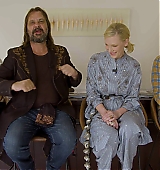
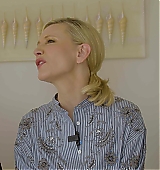
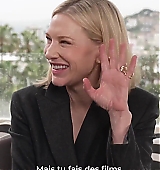
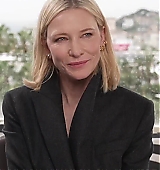
‘The New Boy’ premiered at the Cannes Film Festival after 18 years of work. The film tells the story of an orphaned Indigenous boy who comes to live at a monastery in Australia pic.twitter.com/MLtPsI05HK
— Reuters (@Reuters) May 22, 2023
Photoshoots



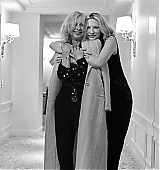
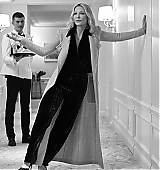








Magazines
